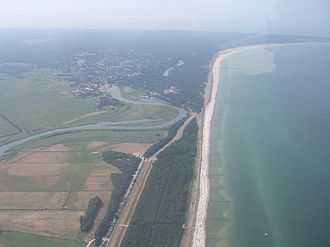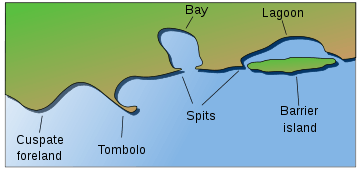Regressive delta

A regressive delta is the landward-facing delta of a stream of water.
The prerequisites for the formation of a regressive delta are a gat or tidal inlet and a sufficiently large lagoon or bodden,[1] which can collect sediment from the sea, but let the water flow out again through a second opening, less exposed to the current. These gats are formed in non-tidal seas on narrow strips of a graded shoreline, on the seaward side of lagoons, that were breached by the sea at some point in the past. The natural inflows of the bodden may also use the gat as an outflow, but cannot create a delta on the seaward side, because the sea currents along a graded coastline prevent one forming.
If the water has strong currents and is low in sediment, the tidal inlet increases in size without forming a delta (e.g. the Hiddensee south of Neuendorf in 1868, peninsula of Kieler Ort).
Well-known regressive deltas are those of the Prerower Strom in northeast Germany and the River Swine in northwest Poland.[2]

